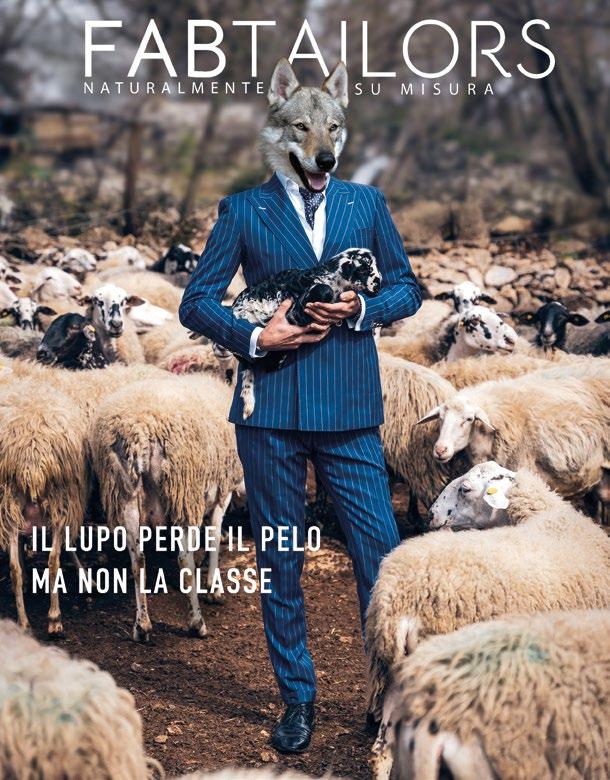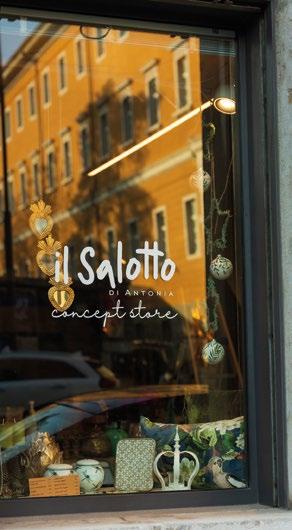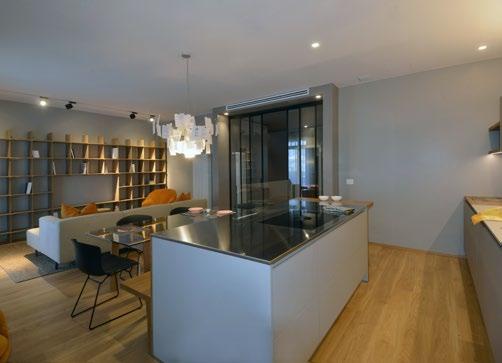
9 minute read
INTERIORS LA CASA REINTERPRETATA Rethinking the home
Le nuove tendenze? Non riguardano solo i colori, ma anche i materiali, sempre più naturali, non trattati.
Una volta in città giravano poche auto, pochi modelli. Oggi, dipende. Da qualche parte ce ne sono troppe, da qualche altra parte non ce ne sono più. Oggi si incontrano più biciclette.
Advertisement
Una volta c’era chi leggeva il giornale passeggiando. Oggi nessuno legge più il giornale nemmeno a casa.
Oggi c’è qualcosa che accomuna se non tutti, molti. Sono in molti a camminare piegati guardando il proprio smartphone. Il nostro mondo pare sia tutto lì.
“Il mondo è cambiato” è la classica frase che un po’ come il prezzemolo finisce nelle discussioni di ogni generazione. Eccezion fatta per quelle dei millennial.
In effetti negli ultimi trent’anni si è assistito a un’evoluzione molto profonda, tecnologica, stilistica, comunicativa, che ha cambiato radicalmente anche il modo di porsi verso i più diversi luoghi e situazioni che fanno parte della nostra vita di tutti i giorni.
L’unico mondo che in sostanza non è cambiato è quello dell’arredamento. I mobili erano fatti di truciolare rivestito e sono prodotti così ancora adesso, i divani erano rivestiti in pelle e tessuto e così sono fatti anche ora.
Ma la visione generale degli ambienti e degli arredi, quella sì che è cambiata.
Oggi si tende ad organizzare case nelle quali chi le abita ha la possibilità di vivere e condividere gli ambienti indipendentemente dalle funzioni specifiche dei locali.
La cucina, insieme alla zona pranzo e al salotto, unità un tempo divise, ormai sono un tutt’uno. Openspace, ovvero spazi aperti alla routine, alla quotidianità. Ma anche all’ospitalità, nel poco tempo che resta. Un tempo da valorizzare con la qualità, per sé stessi e per gli altri.
Le nuove tendenze? Non riguardano solo i colori, che vanno di pari passo con la moda del momento, ma anche i materiali, sempre più naturali, non trattati, come i tessuti sempre più materici che danno corpo a forme sempre più minimali.
Il mondo è cambiato, già, perché più pensato, più coordinato, più personalizzato. Tailor made, come s’usa dire oggi.
In fondo è proprio quello che Zinelli & Perizzi mette in pratica da sempre nel suo “atelier dell’arredamento”.
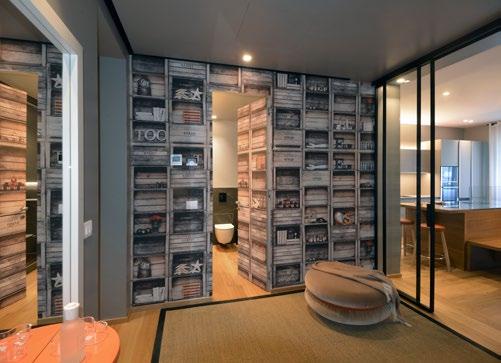
ENGLISH TEXT per celebrare il numero 20 di IES
The new trends? They do not only concern colours, but also materials, which are increasingly natural and untreated. Once there were few cars, few models in the city. Today, it depends. Somewhere there are too many, somewhere else there are no more. Today you meet more bicycles. Once there were people who read the newspaper while walking. Today nobody reads the newspaper even at home any more. Today there is something that unites if not everyone, many. There are many who walk bent over looking at their smartphones. Our world seems to be all there. ‘The world has changed’ is the classic phrase that, a bit like parsley, ends up in the discussions of every generation. Indeed, the last thirty years have witnessed a very profound technological, stylistic and communicative evolution, which has also radically changed the way we approach the most diverse places and situations that are part of our everyday lives.
The only world that has basically not changed is that of furniture. Furniture used to be made of coated chipboard and is still made that way now, sofas were upholstered in leather and fabric and are still made that way now. But the general vision of rooms and furnishings has changed. Today we tend to organise houses in which those who live in them have the possibility of living and sharing rooms independently of the specific functions of the rooms. The kitchen, together with the dining area and living room, once separate units, are now one. Openspace, or spaces open to routine, to everyday life. But also to hospitality, in the little time that remains. Time to be enhanced with quality, for oneself and for others.The new trends? Not only in terms of colours, which go hand in hand with the fashion of the moment, but also in terms of materials, which are increasingly natural, untreated, such as more and more textured fabrics that give shape to increasingly minimal forms. The world has changed, yes, because it is more thought out, more coordinated, more customised. Tailor made, as they say nowadays. After all, this is exactly what Zinelli & Perizzi has always put into practice in its ‘furniture atelier’.
20 special things in Trieste to celebrate IES no. 20
Una scala poetica
A poet’s staircase
Poetica non solo perché la utilizzava Umberto Saba… In pochi minuti si sale dalle Rive a uno degli scorci più belli, in via Ciamician. Si vede tutto il golfo e Trieste sembra un’isola!
–
Not only because poet Umberto Saba used to climb these steps…in just a few minutes one can climb from the Rive all the way to Via Ciamician, where the view on the Gulf is breathtaking and Trieste looks like an island.
El can de Trieste & co
Lelio Luttazzi (1923-2010) è stato un grande uomo di spettacolo. Pianista, compositore, autore, attore, conduttore televisivo… da scoprire allo Studio Luttazzi, in Largo Papa Giovanni. -
Lelio Luttazzi (1923-2010) was a Trieste-born pianist, composer, author, actor, tv presenter… visitors can learn more about this extraordinary showman at Studio Luttazzi, located in Largo Papa Giovanni.
La fontana dei Quattro Continenti
Si trova in piazza Unità la bella fontana realizzata nel 1751, quando l’Australia non era ancora conosciuta. Oggi è un comodo luogo dove darsi appuntamento per conoscersi.
–
The fountain of the Four Continents is located in Piazza Unità. It was built in 1751, before Captain James Cook mapped the east coast of the Australian continent. Today the fountain is one of Trieste’s favourite reference spots and meeting points.
Un caffè speciale
A special coffee
I locals consumano una quantità doppia di caffè rispetto al resto dell’Italia: circa 10 kg a testa all’anno invece dei 5 kg della media nazionale. Perché a Trieste il caffè è una specialità!
Locals drink twice as much coffee as the rest of Italy, namely almost 10 kg per person per year, compared to the national average 5 kg –and with good reason: Trieste’s coffee is a unique experience!
Svevo come guida Svevo as tour guide
Capita di incontrare turisti con la Coscienza di Zeno in mano alla scoperta dei luoghi di Svevo. Ma occhio! Le lettere U.S. scritte su qualche casa significano Uscita di Sicurezza, mica Ultima Sigaretta!
It is not unusual to spot tourists walking through the city streets with a copy of Zeno’s Conscience underarm, following Italo Svevo’s itineraries. Warning! Road signs with the letters U.S. signal safety exits (Uscita di Sicurezza), and not the spot of the character’s Ultimate Smoke.
Il pinguino di Trieste
The penguin of Trieste Giunto avventurosamente su una nave dal Sudafrica negli anni ‘50, il pinguino Marco divenne amico di tutti. Abitava nell’Aquario Civico, dove presto sarà ricordato con una statua.
–
After an adventurous crossing on a ship from South Africa, Marco the penguin arrived in Trieste in the ‘50s and immediately became the city’s beloved mascot. He lived in the City’s Aquarium, where a statue will soon commemorate him.
La passeggiata sul molo Audace
The promenade of Molo Audace
Quando è sereno, è una “piazza” dove camminare, sedersi, stare al sole.
Al tramonto è un luogo privilegiato per godersi lo spettacolo. E con la Bora? È audace arrivare fino in cima!
–
On a clear day the large pier surface resembles a city square, where one can take a stroll or sit down and enjoy the sun. At sunset the whole perimeter of the dock is a front-row seat to a wonderful display of nature’s beauty. And when the Bora rages…only the audaci (lit. the brave) venture all the way to the edge!
Trieste graffiti Trieste graffitis
Diversi luoghi della città, dal bagno Pedocin allo Stadio Grezar, sono diventati gallerie d’arte en plein air. Andarle a scoprire sarà un viaggio nel viaggio.
(Qui quello firmato Jan Sedmak a Borgo San Sergio).
From lido Pedocin to Grezar stadium, the city walls have become a true open-air art gallery. Follow the graffitis to embark on a journey within the journey.
(Jan Sedmak’s graffiti in Borgo San Sergio).
Carte in gioco Playing cards
Trieste non è solo una “città di carta” è anche una “città di carte”. Da gioco! Ai triestini piace giocare a casa, nei locali, ma anche al mare. Da “gnagno” fino al burraco, sempre più di moda.
Trieste is not only the city of writers, but also a “city of cards” – playing cards, to be exact. Triestini love card games. The trendiest fashion item you can carry with you at a café or the seaside is a suited deck of cards for a game of “gnagno” or Buraco.
La scienza che gioca The game of science
Non occorre essere scienziati per andare all’Immaginario Scientifico, uno dei più importanti science centre d’Italia, da scoprire al Magazzino 26 nell’area del Porto Vecchio.
You need not be a scientist to enjoy Immaginario Scientifico, one of Italy’s most prestigious science centres, located in Magazzino 26, within the area of Porto Vecchio.
Un Parco rifiorito Where the flowers bloom again
Il Parco di San Giovanni è il luogo-simbolo della rivoluzione culturale di Franco Basaglia, che ha fatto scuola nel mondo. Il roseto che esplode in primavera è uno splendido segnale di rinascita.
Parco di San Giovanni is a symbol of Franco Basaglia’s trailblazing cultural revolution. The spring colours of the rose garden in full bloom are a beautiful symbol of rebirth.
Parco di Villa Revoltella Park of Villa Revoltella
Il bel giardino, con villa annessa, donato dal Barone Revoltella alla città, è un luogo che merita di essere visitato. E potete anche farvi un selfie con Pinocchio!
The beautiful garden surrounding the mansion was donated by Barone Revoltella to the city of Trieste. It is worth a visit, and perhaps a selfie with Pinocchio himself!
La grande festa della città
A feast for the entire city
L’appuntamento con la Barcolana si rinnova puntuale la seconda domenica di ottobre, ma l’evento continua tutto l’anno nei ricordi delle edizioni passate e nei progetti per quelle future.
Celebrations culminate every year on the second Sunday of October, yet the trail of joy that Barcolana leaves behind is enough to last throughout the entire year, between the memory of past editions and exciting future projects.
La berlina triestina Trieste’s berlina
Una pallina di gelato o due, tanta panna e una guarnizione a scelta, tutto in un bicchiere, da Zampolli, una delle gelaterie più antiche della città.
One or two scoops of ice cream, a generous spray of whipped cream, and a topping of your choosing, served in a glass-size cup at Zampolli’s, one of Trieste’s historic icecream parlours.
Sua maestà, la Bora. In
Sacchetta!
Her majesty, Queen Bora. In Sacchetta!
Un porticciolo tranquillo dominato dall’antica Lanterna. Ma quando la bora soffia, le barche si scatenano in uno straordinario, eolico concerto.
The Sacchetta is a tranquil marina at the foot of the historic Lanterna. Yet, when the Bora rages, the ships dance within their moorings to the rhythm of an extraordinary concert of the wind.
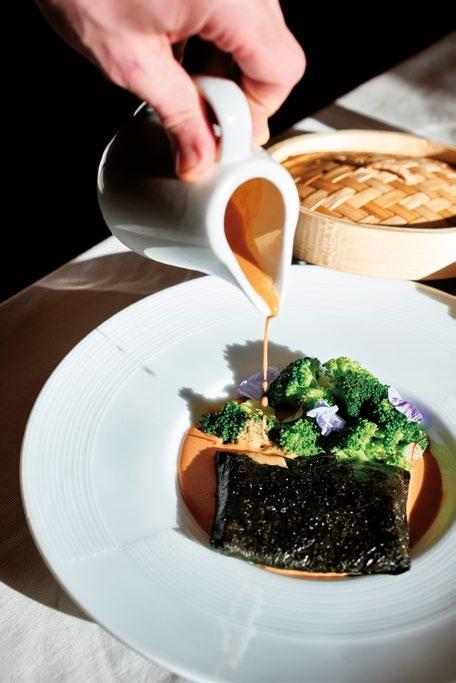
Trieste MultiCulti
Uno degli aspetti più speciali di Trieste è la sua anima multiculturale, multireligiosa. Le splendide chiese di tanti culti diversi rendono Trieste ancora più bella e affascinante, oltre che tollerante.
One of Trieste’s best features is her multicultural soul, where multiple faiths co-exist side by side. The beautiful architecture of these places of worship attest to the city’s tolerance, which makes it even more fascinating.
Miramare da ammirare
Magnificent Miramare
Da queste parti non si vedono castelli di sabbia, però c’è un castello altrettanto magico in riva al mare. Per molti la scoperta di Trieste comincia da qui.
–There is no sand for sand castle on these shores – yet, there is a real castle on a cliff overlooking the sea. Many start their exploration of Trieste from here.
Piazza Ponterosso
È il cuore del borgo teresiano sviluppatosi ai tempi dell’Imperatrice Maria Teresa d’Austria, alla quale è stato da poco reso omaggio con il tallero gigante, un “grazie” postumo alla sovrana.
Situated at the heart of Borgo Teresiano, it stemmed from the urban development endeavour ordered by Empress Maria Theresa of Austria. The recent unveiling of the giant thaler devoted to the monarch is the city’s latest sign of posthumous gratitude to honour her memory.
Facciate belle e sfacciate Facades: the beautiful and brazen Tra le chicche architettoniche merita una puntatina Casa Mosco, in via Tigor 14, nota come la “Casa dei Mascheroni”, ripresa anche in celebri film da “Senilità” a “Va’ dove ti porta il cuore”.
–Architecture enthusiasts cannot miss a stop at no.14 of Via Tigor to take a look at Casa Mosco, also known as “Casa dei Mascheroni” (lit. House of Mascarons). The Casa’s facade was featured in films such as “Careless” (1962) and “Follow your heart” (1996).
Un panino de coto e kren da Siora Rosa
Bollito, porcina, prosciutto cotto alla triestina… Il ritratto di Siora Rosa veglia su uno dei più celebri buffet triestini, autentica ambasciata dei sapori locali, tappa imperdibile.
Lit. a breadroll with ham and horseradish at Siora Rosa. Bollito (stew), porcina (cured pork meat), prosciutto cotto alla triestina (ham à la Triestina)… From her portrait Siora (Ms) Rosa watches over one of Trieste’s most famous buffets and a true beacon of local traditional cuisine. Highly recommended.
